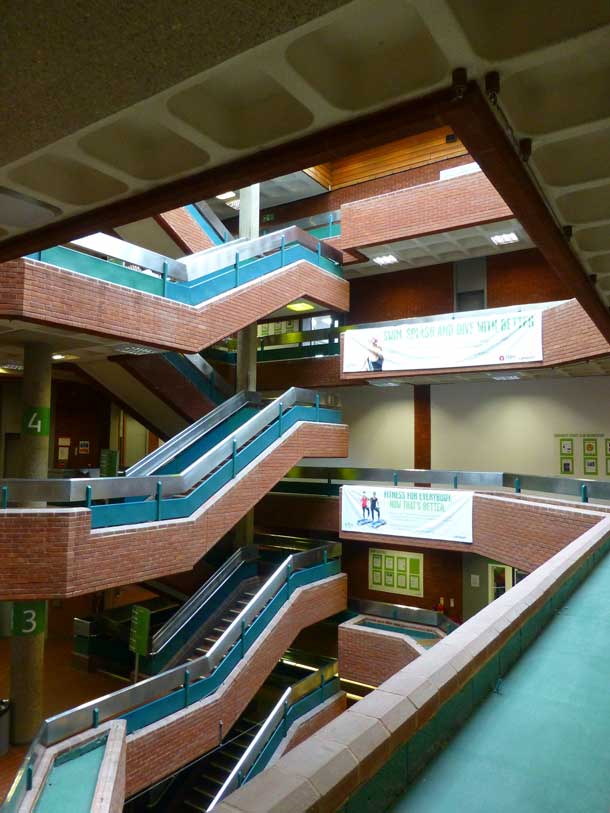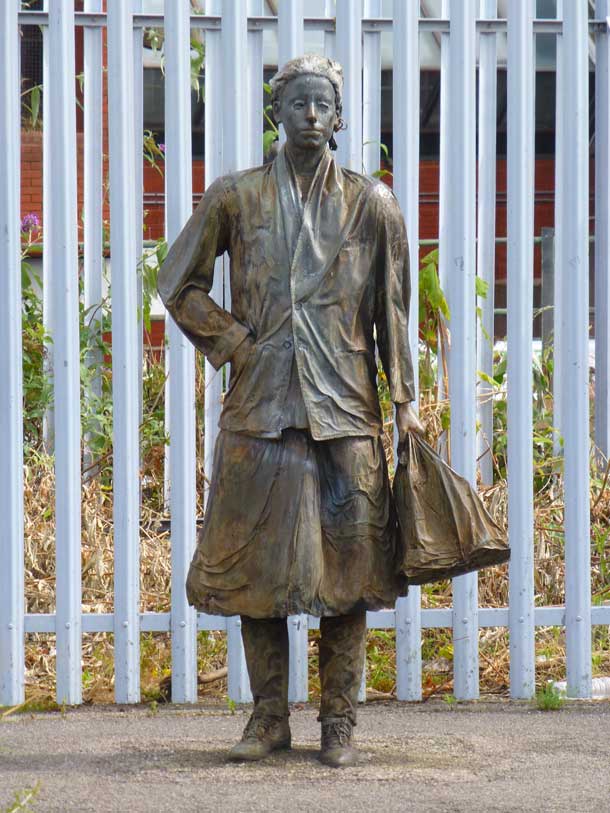Historic England today (3 November) announced Grade II listing for two Brixton landmarks – the Rec and the sculpture Platforms Piece on Brixton overground station’s platforms

Another Lambeth landmark, the bust of Nelson Mandela on the South Bank, was also listed.
The listings are part of Historic England’s partnership with the BBC’s Black and British season.

Listing confirms a building’s special architectural and historic interest and brings it under the consideration of the planning system, “so that it can be protected for future generations”.
The Rec – which once faced demolition – was nominated for listing last year by DOCOMOMO, a non-profit organisation devoted to the documentation and conservation of buildings, sites and neighbourhoods of the modern movement.
The Brixton Rec User Group (BRUG) urged supporters of the Rec to contact Historic England to back the listing.
It said that listing would protect the Rec’s unique architectural features as well as its huge range of recreational facilities for the future.
The group also said the listing would “celebrate and recognise the vital role the centre has played in the cultural and social life of Brixton residents, through a history of turbulent change”.
Listing would also ensure that any major changes proposed by Lambeth council would have to be explained and justified publicly.
A real Brixton landmark
Historic England said Platforms Piece is thought to be the first work of public sculpture depicting black British people.
The 1986 bronze sculptures of three life-sized figures have watched over commuters at Brixton railway station for 30 years.
British Rail commissioned Platforms Piece as the focal point for a station improvement scheme.
One of the finest sports centres
Historic England said Brixton Recreation Centre, which opened in 1985, “is now recognised as one of the finest sports centres and pools of the 1970s and 1980s, and one of very few to be listed”. Designed by George Finch, the Rec’s dramatic, sculptural design has been likened to a theatre or gallery.
BRUG welcomed the listing, saying the Rec was a cherished local public facility, a landmark in central Brixton and a hub used by more than 2,000 people a day from a diverse and changing community.
“BRUG is also proud of and honours the achievements of the community clubs that use the Rec.”
Nelson Mandela visited the Rec in 1996.
Last month Afewee Boxing was awarded a grant award by the London Marathon Trust, matched by Lambeth council’s leisure provider GLL, which runs the Rec, to set up a new permanent gym in the Rec.
A new short film about Brixton Rec and some of the people that use and love the centre can be seen online.
You can contact the BRUG by email or its website.
Black British History
Heritage minister Tracey Crouch said: “I’m absolutely thrilled to list these places and sculptures with such a strong connection to Black British history.”
Duncan Wilson, chief executive of Historic England said: “Today we are identifying and protecting three places that are linked to a specific time and place, but Black history has been present in our nation throughout the centuries, and right across our historic environment.”
Walk the history of Brixton
Brixton is the fifth neighbourhood in London to be mapped for Historic England’s free Walk History app. The latest route will explore the history of Black Brixton from the post war period to the present day, starting with the arrival of the Empire Windrush in 1948. Each tour is designed to reveal the hidden stories behind the streets we walk down every day.
Historic England wants the public to add details of their own stories and pictures relating to black history to the National Heritage List for England – a free-to-search record of the 400,000 most significant historic places around the country.
BBC season: Black and British
Historic England has collaborated with the BBC and partners the Heritage Lottery Fund, The National Archive, Brixton’s Black Cultural Archives and the BFI on Black and British, a season of programming and events celebrating the achievements of black people in the UK and exploring the culture and history of Black Britain. It is written and presented by historian and broadcaster David Olusoga.

